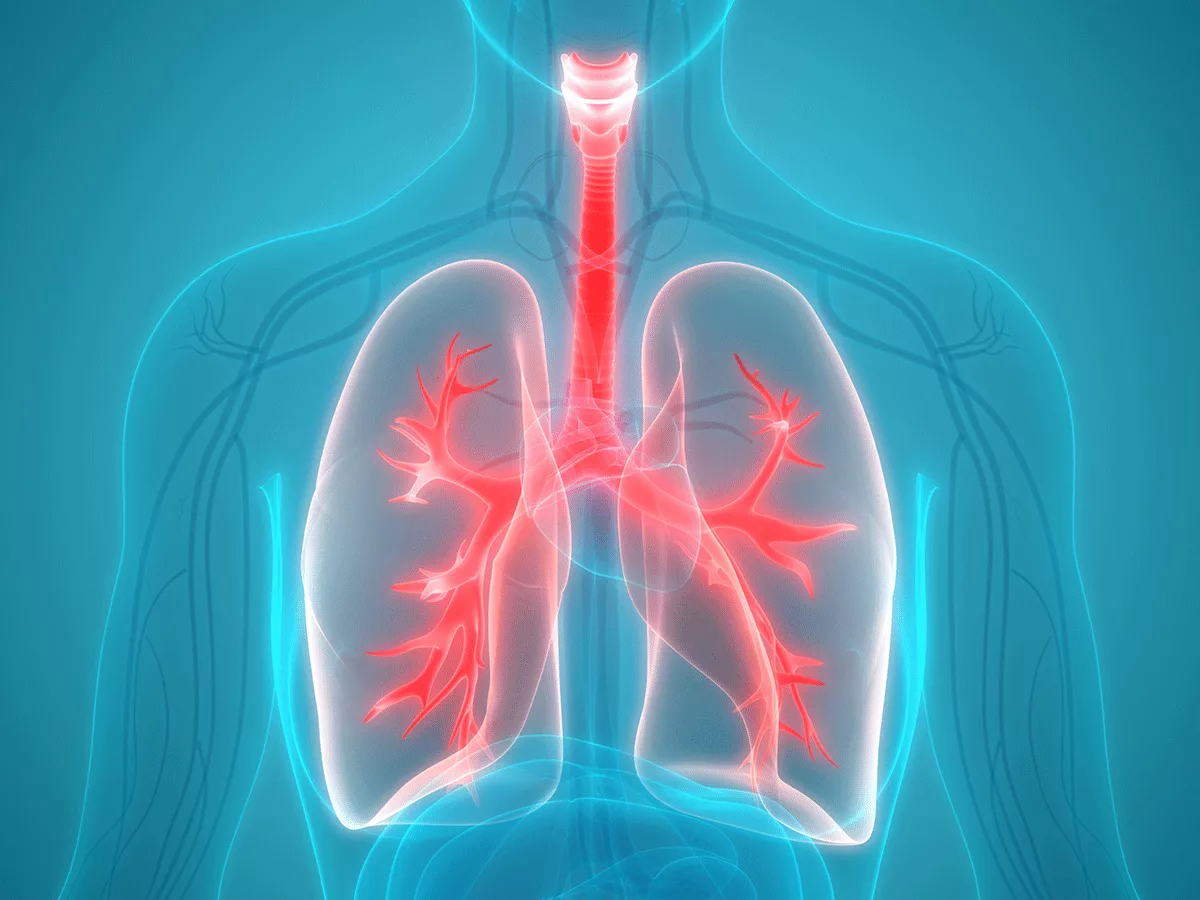A study led by researchers at Tsinghua University in Beijing has elicited the mechanism whereby the protein leucine-rich repeat kinase 2 (LRRK2) prevents alveolar type II epithelial (AT2) cell dysfunction, limiting profibrotic responses during progression of pulmonary fibrosis.
Reported in the August 27, 2021, online issue of Proceedings of the National Academy of Sciences, the Chinese study emphasizes the biological roles of LRRK2 in maintaining lung homeostasis and in fibrotic lung disease pathogenesis, while providing potential targets for designing novel therapeutic strategies.
AT2 cells play multiple roles in the function of the alveoli, the lung structures where gas exchange takes place.
Previous research had shown Lrrk2-/- mice to have altered AT2 cell morphology, "suggesting a possible role for LRRK2 in lung physiology," noted study leader Li Wu, a professor in the Institute for Immunology of the School of Medicine at Tsinghua University.
However, "ours is the first study to reveal the roles of LRRK2 in maintaining lung homeostasis and in preventing fibrotic lung disease, thus providing new targets for designing new therapies," Wu told BioWorld Science.
Maintaining lung homeostasis is critically important, as homeostatic perturbations lead to severe lung diseases, in many of which pulmonary fibrosis is both a common pathogenic feature and a final outcome.
These diseases include "respiratory virus infections, chronic lung inflammation and/or injury, long-term exposure to cigarette smoke, and chronic obstructive pulmonary disease (COPD)," said Wu.
Among these, idiopathic pulmonary fibrosis (IPF) is a particularly common fatal disease characterized by excessive extracellular matrix deposition, destruction of normal lung tissue, and ultimately respiratory failure.
Although IPF is thought to be associated with disturbed lung homeostasis and altered pulmonary functions, its underlying molecular mechanisms remain unclear.
AT2 cells release profibrotic cytokines and chemokines to recruit and activate immune cells, including monocyte-derived macrophages (mo-Macs).
During IPF progression, mo-Macs are alternatively activated upon stimulation of T helper (Th2) cell cytokines including interleukin-4 (IL-4) and IL-13.
LRRK2 is widely expressed in various cells and is involved in neuronal plasticity, autophagy and vesicle trafficking, with LRRK2 variants being associated with increased risk of Parkinson's disease, Crohn's disease and leprosy.
Evolutionarily, LRRK2 belongs to the receptor-interacting protein kinase (RIPK) family. Several other family members are key cell death and innate immunity regulators.
Previous studies have reported that Lrrk2-/- mice showed AT2 cell morphology alterations, implying a role of LRRK2 in lung physiology, but it remains unknown whether LRRK2 is involved in regulating lung homeostasis or diseases.
In the new PNAS study, the authors observed a clear downregulation of LRRK2 expression in human and murine fibrotic lungs, prompting them to investigate LRRK2's regulatory role during pulmonary fibrosis.
"In both human and mouse fibrotic lungs, expression of LRRK2 was seen to be decreased by approximately one half," Wu said.
"Considering the morphological changes reported in Lrrk2-deficient AT2 cells, we speculated that the loss or downregulation of LRRK2 might have some effects on progression of lung fibrosis."
Using bleomycin-induced pulmonary fibrosis mouse models, the researchers showed that LRRK2-deficient mice displayed more rapid and exacerbated fibrotic progression, accompanied by extensive macrophage-mediated profibrotic immune responses after bleomycin insult.
"Almost half of Lrrk2-/- mice died at around day 7 and could barely survive until day 14 after bleomycin treatment, while less than 20% of wild-type (WT) mice had died by day 14 after the same dose of bleomycin," said Wu.
"Furthermore, the extent of lung collagen deposition in Lrrk2-/- mice at the middle stage of the bleomycin-induced pulmonary fibrosis model was similar to that of WT mice at the later fibrotic stage," she added.
"This accelerated bleomycin-induced lung fibrosis in Lrrk2-/- mice was accompanied with increased infiltration of mo-Macs, which enhanced mo-Mac-mediated profibrotic immune responses."
Effects on AT2 cells
The researchers further demonstrated that in bleomycin-treated mice, LRRK2 expression was dramatically decreased in AT2 cells, with its deficiency resulting in profound AT2 cell dysfunction including impaired autophagy and accelerated cellular senescence.
"LRRK2 expression was downregulated to less than half of normal levels in the AT2 cells of either bleomycin-treated mice and in IPF patients," Wu said.
Additionally, LRRK2-deficient AT2 cells exhibited a higher capacity for recruiting profibrotic macrophages via the chemokine (C-C motif) ligand 2/C-C chemokine receptor type 2 (CCL2/CCR2) signaling, leading to extensive macrophage-associated profibrotic responses and progressive pulmonary fibrosis.
"LRRK2 deficiency in AT2 cells was also shown to lead to impaired autophagy in AT2 cells and increased production of CCL2" in the progression of pulmonary fibrosis, noted Wu.
"LRRK2-deficient AT2 cells with a higher capacity for recruiting profibrotic macrophages via CCL2/CCR2 signaling resulted in enhanced mo-Macs-mediated profibrotic immune responses, so blocking this signaling pathway could reduce the effects of mo-Macs-mediated profibrotic responses."
Together, these findings show that LRRK2 plays a key role in preventing AT2 cell dysfunction and orchestrating innate immune responses to protect against pulmonary fibrosis.
The findings also highlight the biological functions of LRRK2 in maintaining lung homeostasis and preventing fibrotic lung disease, thereby providing a potential target for developing clinical therapeutic strategies.
"The findings of our study provide new insights into the pathological mechanisms of IPF, which may have potential for translation into the development of new IPF treatments," concluded Wu.
"In our future work, we will seek to define the regulators controlling LRRK2 expression in the lung and the means by which to maintain the normal level of LRRK2 expression in the lung to prevent the development of IPF."

